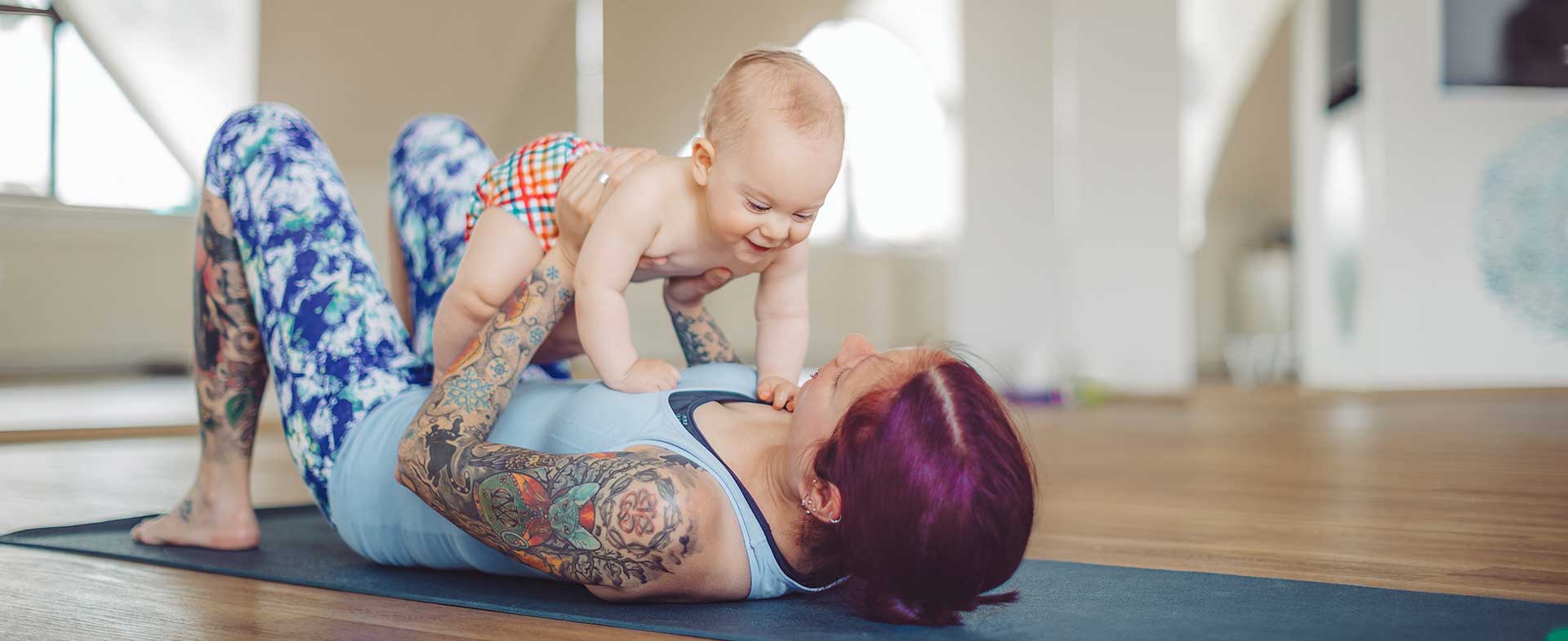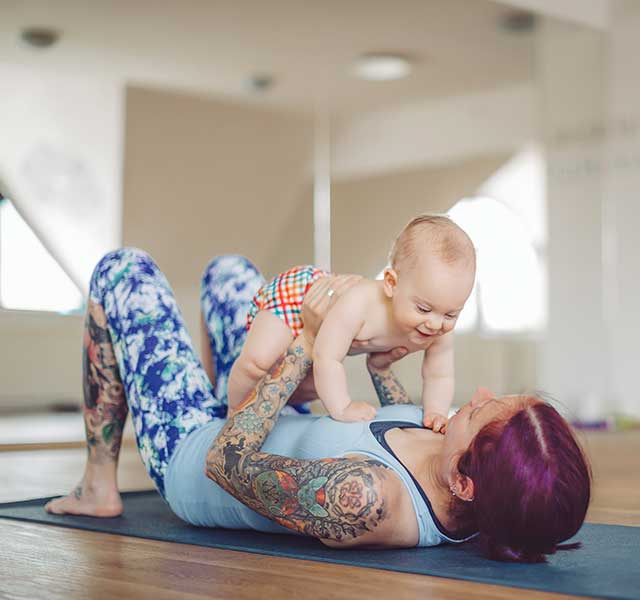If you've just had a baby, exercise may be the last thing on your mind. Even if you had a seamless pregnancy, carrying and birthing a baby takes both physical and emotional effort. Despite the mounting pressures of caring for a newborn, many women feel pressured to rush back into a workout regimen just days or weeks after delivery.
It took your body about 40 weeks to reach a full-term pregnant shape, so it may take that long — or even longer — for your body to bounce back to its pre-pregnancy state. And that's totally normal. "If you look at the data, more than 60% of new moms are still working to lose their baby weight a year or more after having a baby," says Jessica Ery, a certified nurse midwife at Henry Ford Health.
The Benefits of Postpartum Exercise
Whether you're pregnant, postpartum, or raising an infant, exercise is one of the most important things you can do to heal and recover. But don’t expect to participate in a 90-minute HIIT routine for quite a while. Instead, postpartum exercise should focus on regaining strength in muscles that weakened during pregnancy.
Benefits of postpartum fitness include:
- Increased energy
- Better sleep
- Increased strength
- Weight loss
- Improved mood
- Improved cardiovascular fitness
A Guide to Postpartum Fitness
During pregnancy, many women have visions of effortlessly popping out a baby, taking it easy for 4 to 6 weeks per doctors' orders, then returning to their 5-day-a-week workout regimen.
In reality, the process of getting back to a regular fitness routine after having a baby is rarely that easy. These six strategies can help you get active:
- Lower your expectations. Most women don't have a clear picture of what the postpartum period really looks like. Instead, new moms are bombarded with images and videos of celebrities and movie stars posting their bounce-back bodies on Instagram and Twitter. "Social media has created a false perception of the postpartum period," Ery says. "It's important for women to have realistic expectations — to love the body they have because it just did something amazing."
- Time it right. Healing looks different for every new mom. "Whether you have had a vaginal or a cesarean birth, your healthcare provider will likely recommend you limit your exercise to walking in the first 6 to 8 weeks after delivery," Ery says. "After that initial period of healing, women can slowly progress the amount and intensity of the physical activity they participate in. Because each woman and each birth is unique, it is important to discuss your fitness goals with your healthcare provider so they can advise you accordingly."
- Consider your fitness level before baby. There's no one-size-fits-all prescription for when it's safe to return to your usual fitness routine. "If you were running marathons before pregnancy, you'll likely be able to return to your runs more quickly than someone who was completely sedentary before they had their baby," Ery says.
- Beware of wobbly joints. During pregnancy, your body received a heavy hit of hormones to help your joints soften and relax so you could birth your baby. It turns out that those hormones can stay in your system for up to six months postpartum.
- Start slow. Whether you had a C-section or a vaginal delivery, it's important to take your time easing back into exercise. If you push yourself too hard, too quick, a full recovery could take even longer. That doesn't mean you need to sit on the sidelines for weeks. Instead, start with gentle workouts. "Walking is a great first physical activity after baby," Ery says. "It's low-impact and it won't put a lot of strain on your pelvic floor muscles." Start with a 5-minute stroll around the neighborhood. If you're not aching, bleeding or short of breath, try for a 7-minute walk the next day and build up from there.
- Focus on your pelvic floor. Kegels are one exercise you can begin right away — even while you're still pregnant. Pregnancy and childbirth weaken your abdominal and pelvic floor muscles, the same muscles that provide stability, balance and core strength. After pregnancy, regaining strength in these muscles is vital, and Kegels are a way to do just that. "These exercises can help prevent incontinence and other health concerns related to childbirth," Ery says.
Getting Back to Basics
Health authorities, including the Department of Health and Human Services, recommend that healthy women get at least 150 minutes of moderate-intensity aerobic activity a week. If you have a newborn at home, and your hormones are out of whack, that can be a real challenge.
Maybe you're suffering from mood swings or having trouble nursing. Maybe you're exhausted and haven't been able to get three consecutive hours of sleep. Or maybe you're just not ready to start an exercise routine. "It's important to give yourself grace and know that your body will heal over time," Ery says. "Reach out to the support people in your life so you can get the rest you need to feel more like yourself again."
Most important, listen to your body. As you slowly ease back into exercise, you might feel shaky or lightheaded. You might notice increased bleeding or feel discomfort. If those things happen, press pause and talk to your health care provider. Over time, gentle exercise will do wonders for your physical and emotional health — and it will give you the energy you need to care for your newborn.
Subscribe today to receive weekly emails of our latest tips on pregnancy, raising healthy kids, fitness, nutrition and more.
To find a doctor or certified nurse midwife at Henry Ford, visit henryford.com or call 1-800-436-7936.
Jessica Ery, DNP, MSN, RN, APRN, CNM, is a certified nurse midwife who sees patients at Henry Ford West Bloomfield Hospital.



